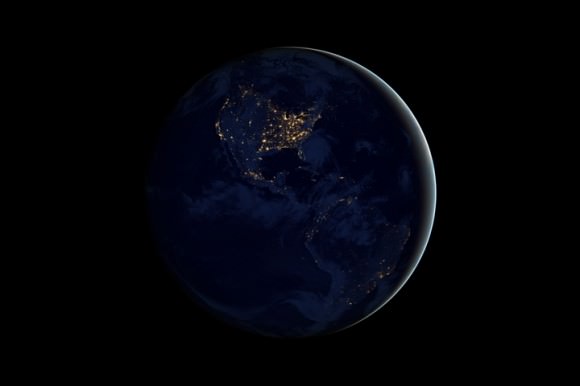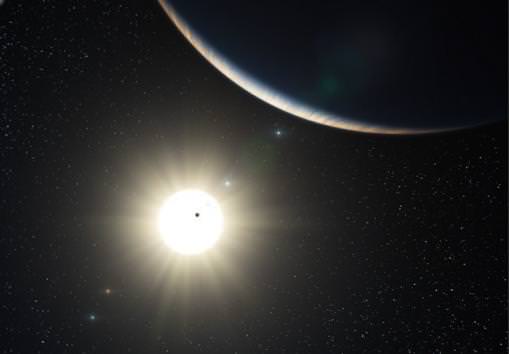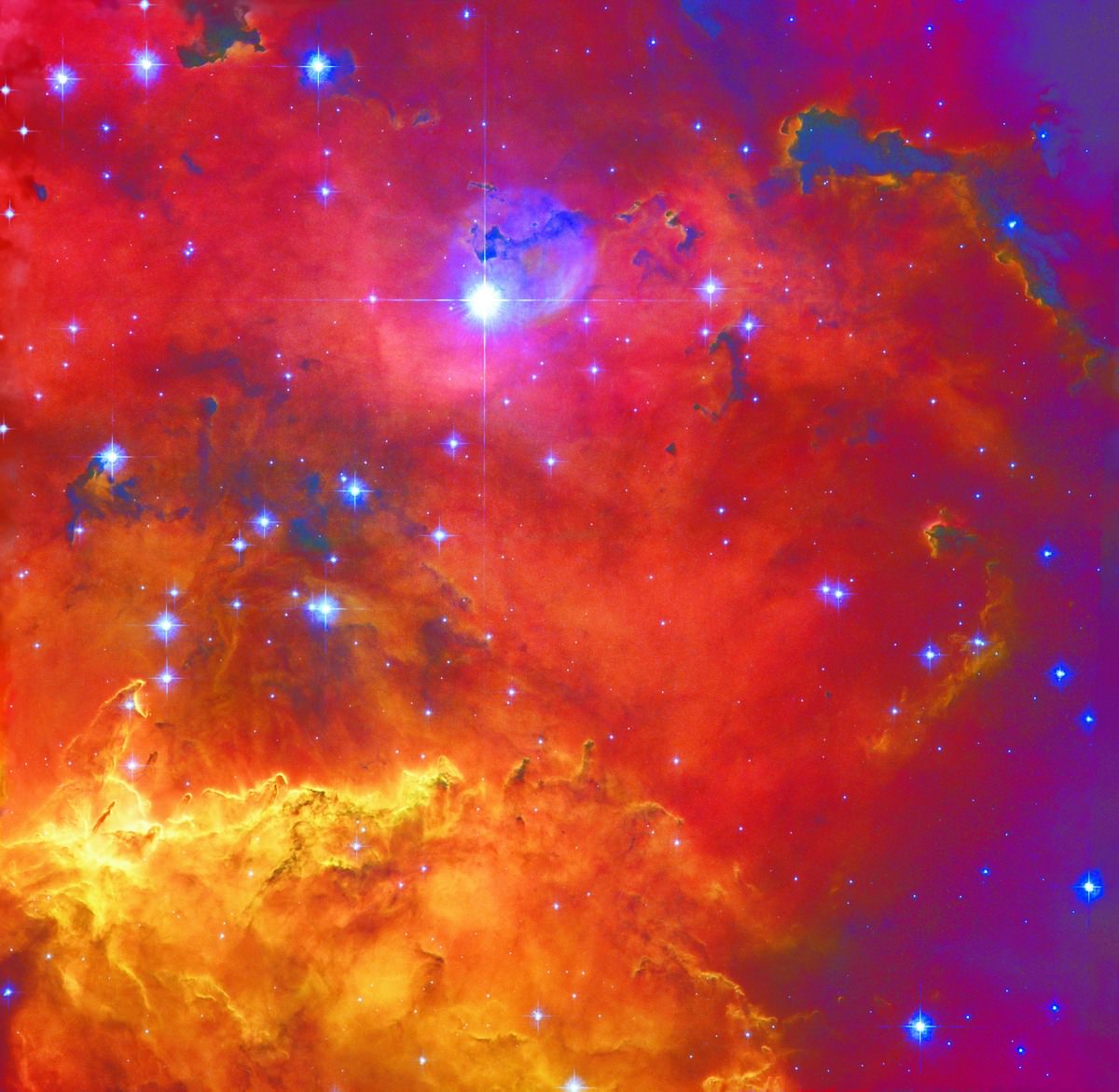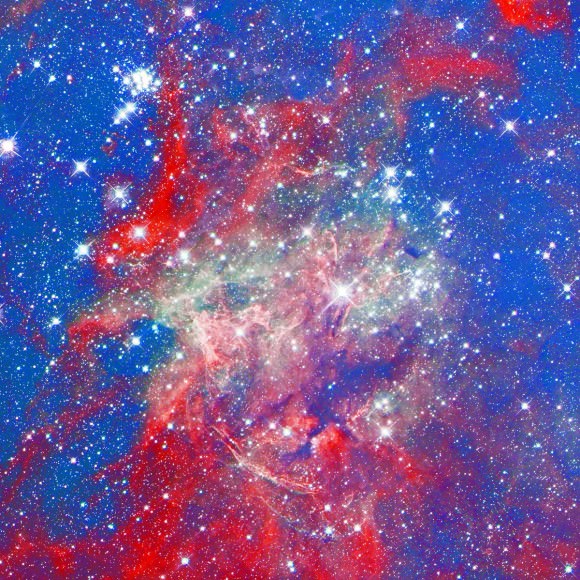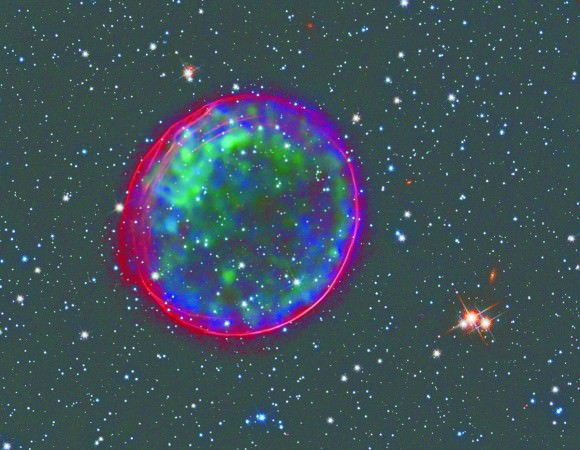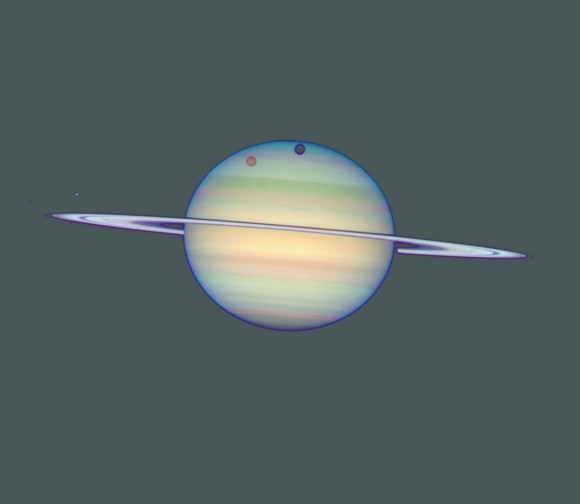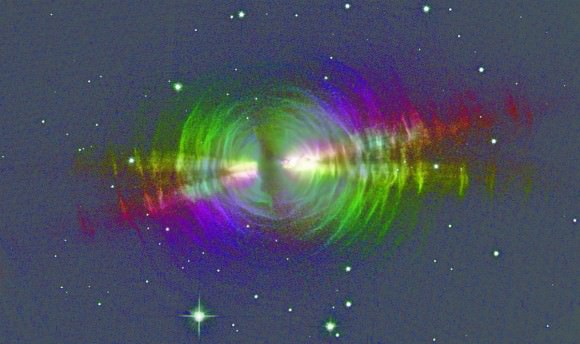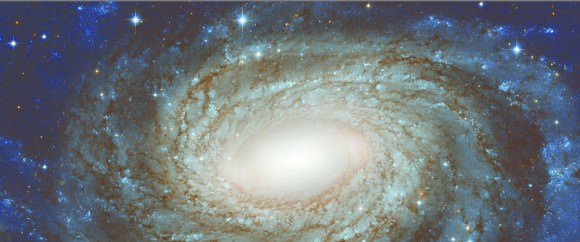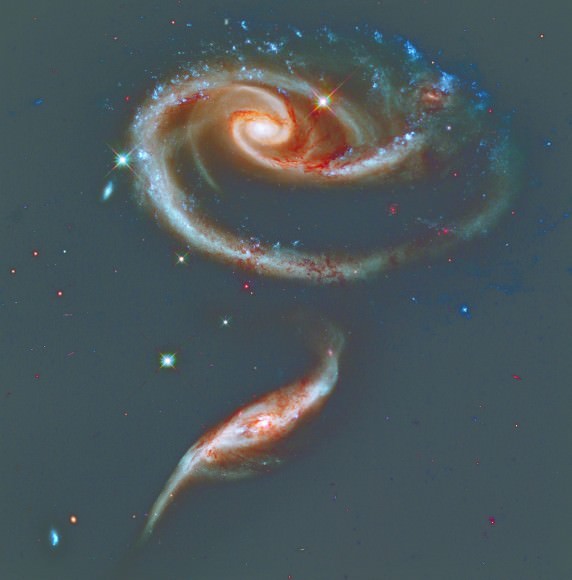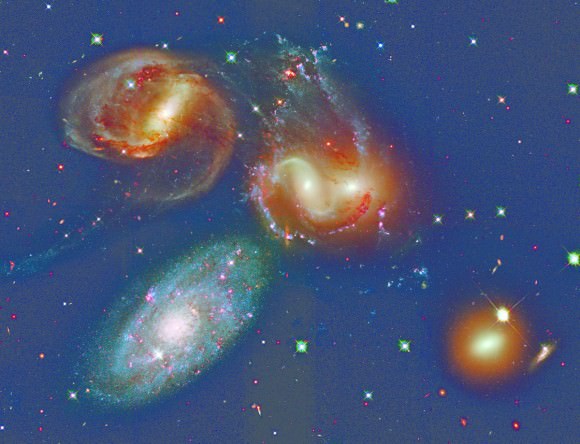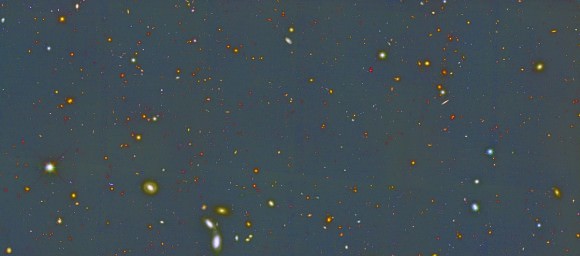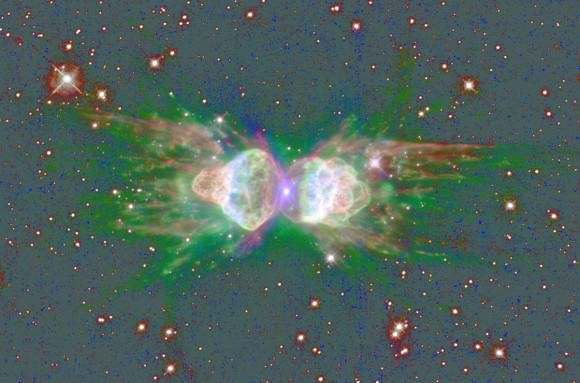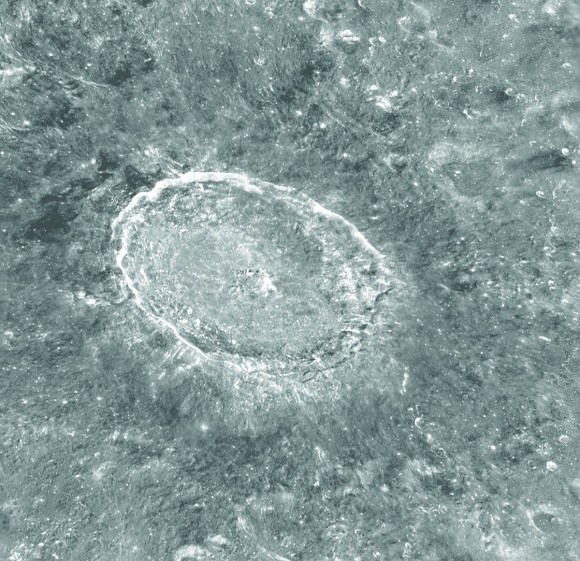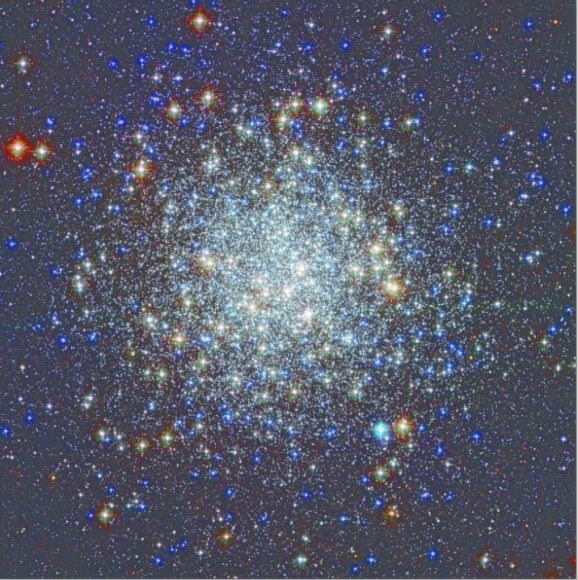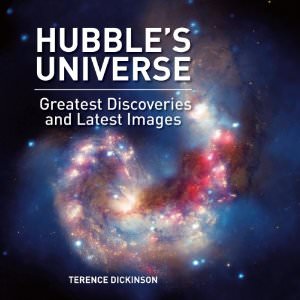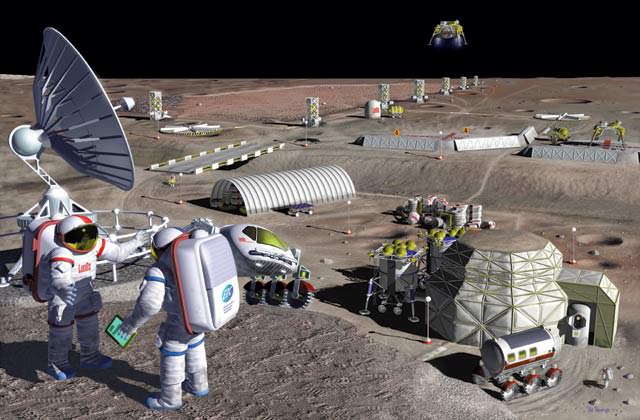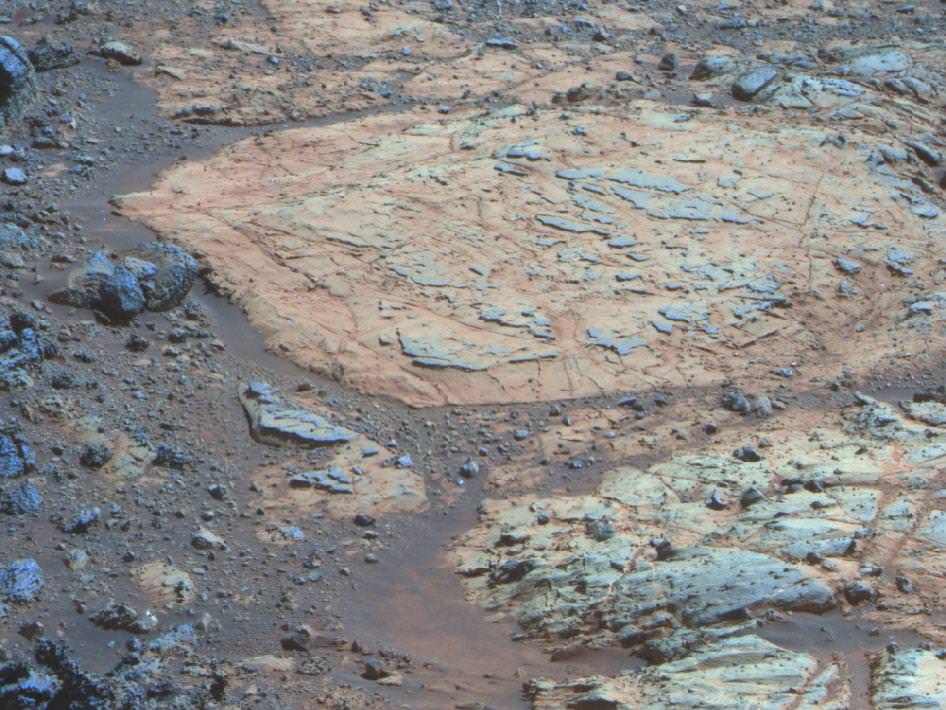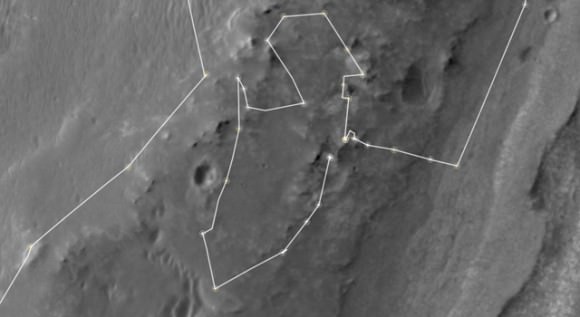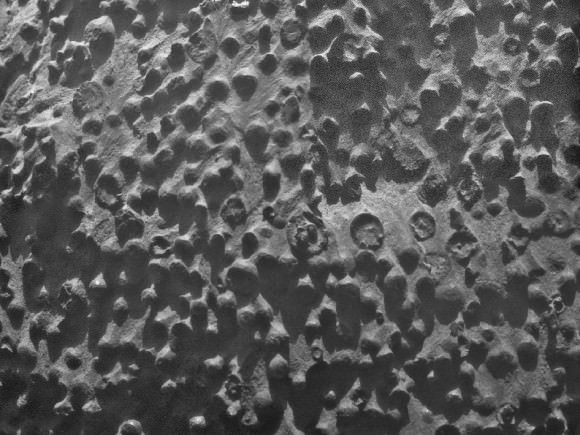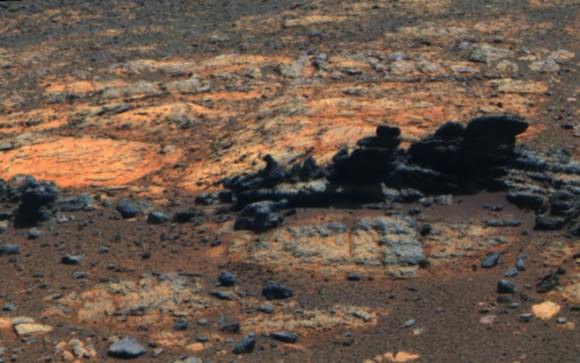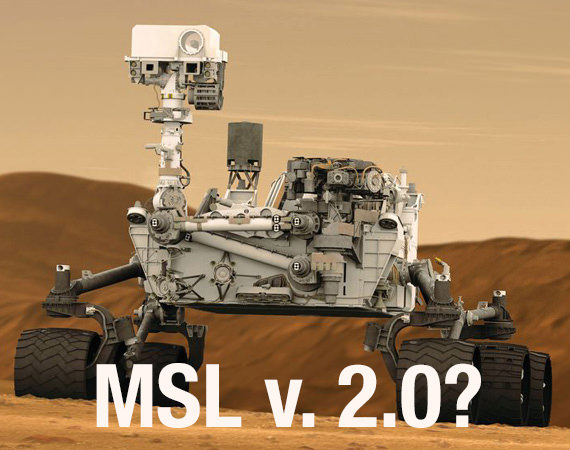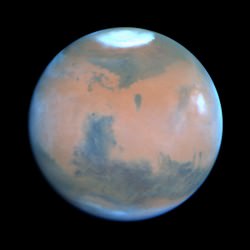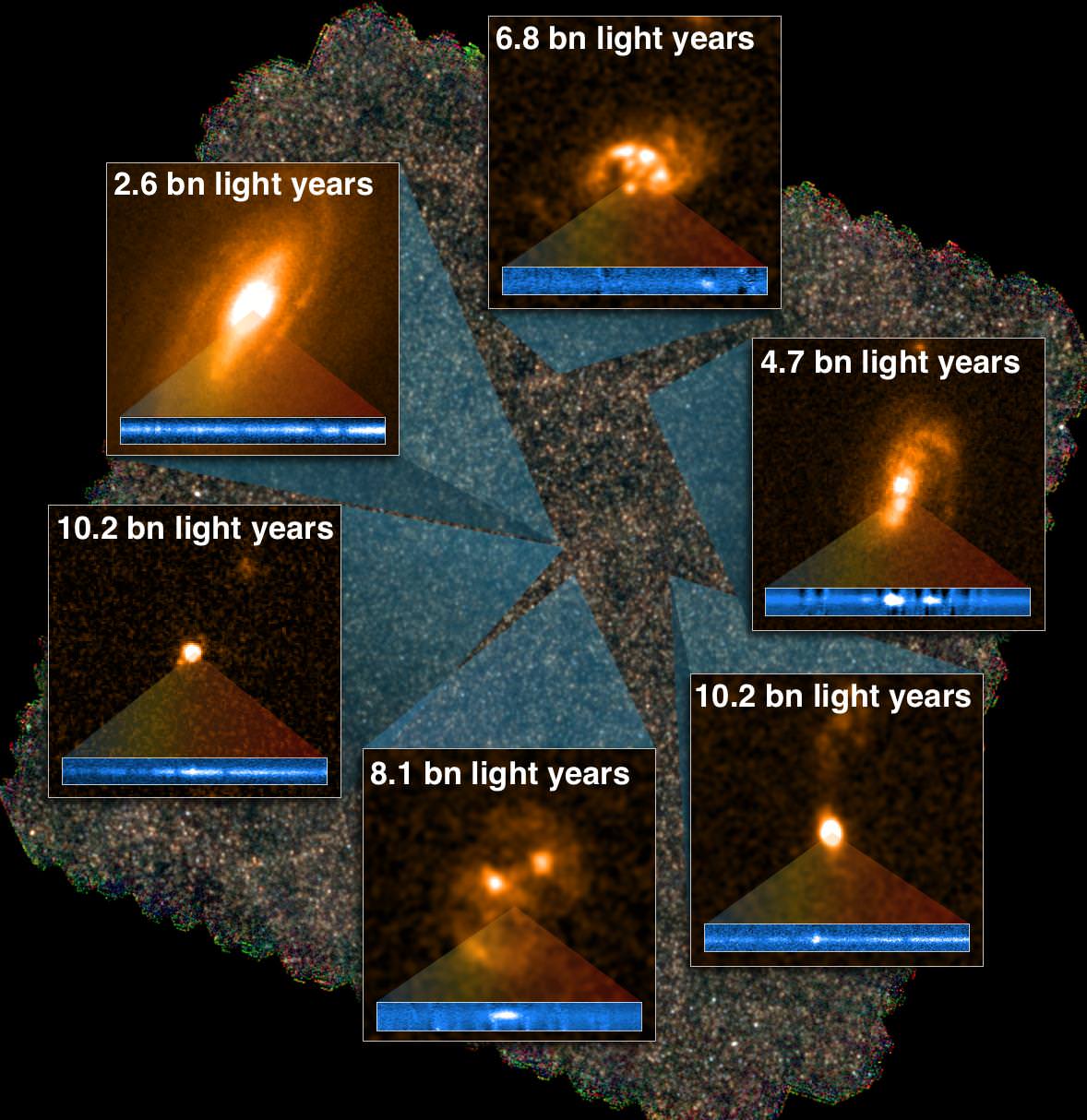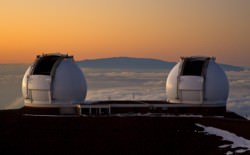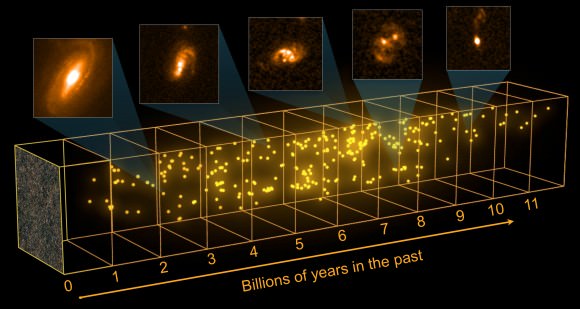This artist’s impression shows the planetary system around the sun-like star HD 10180. Credit: ESO/L. Calçada
Our Earth feels like a warm and welcoming place for us life forms, but beyond our little planet, the majority of the solar system is too cold for us to live comfortably. A new study suggests that planets in other solar systems might be more habitable than our own because, on the whole, they would be warmer — up to 25 % warmer. This would make them more geologically active and more likely to retain enough liquid water to support life, at least in its microbial form. In turn, the “Goldilocks Zone” around other stars — the habitable region — would be bigger than the Zone in our own Solar System.
This new study comes from geologists and astronomers at Ohio State University who have teamed up to search for alien life in a new way.
They studied eight “solar twins” of our Sun—stars that very closely match the Sun in size, age, and overall composition—in order to measure the amounts of radioactive elements they contain. Those stars came from a dataset recorded by the High Accuracy Radial Velocity Planet Searcher spectrometer at the European Southern Observatory in Chile.
They searched the solar twins for elements such as thorium and uranium, which are essential to Earth’s plate tectonics because they warm our planet’s interior. Plate tectonics helps maintain water on the surface of the Earth, so the existence of plate tectonics is sometimes taken as an indicator of a planet’s hospitality to life.
Of the eight solar twins the team has studied so far, seven appear to contain much more thorium than our Sun—which suggests that any planets orbiting those stars probably contain more thorium, too. That means that the interior of the planets are probably warmer than ours.
For example, one star in the survey contains 2.5 times more thorium than our Sun, according to team member and Ohio State doctoral student Cayman Unterborn. He says that terrestrial planets that formed around that star probably generate 25 percent more internal heat than Earth does, allowing for plate tectonics to persist longer through a planet’s history, giving more time for live to arise.
“If it turns out that these planets are warmer than we previously thought, then we can effectively increase the size of the habitable zone around these stars by pushing the habitable zone farther from the host star, and consider more of those planets hospitable to microbial life,” said Unterborn, who presented the results at the American Geophysical Union meeting in San Francisco this week.
“If it turns out that these planets are warmer than we previously thought, then we can effectively increase the size of the habitable zone around these stars.”
“At this point, all we can say for sure is that there is some natural variation in the amount of radioactive elements inside stars like ours,” he added. “With only nine samples including the sun, we can’t say much about the full extent of that variation throughout the galaxy. But from what we know about planet formation, we do know that the planets around those stars probably exhibit the same variation, which has implications for the possibility of life.”
His advisor, Wendy Panero, associate professor in the School of Earth Sciences at Ohio State, explained that radioactive elements such as thorium, uranium, and potassium are present within Earth’s mantle. These elements heat the planet from the inside, in a way that is completely separate from the heat emanating from Earth’s core.
“The core is hot because it started out hot,” Panero said. “But the core isn’t our only heat source. A comparable contributor is the slow radioactive decay of elements that were here when the Earth formed. Without radioactivity, there wouldn’t be enough heat to drive the plate tectonics that maintains surface oceans on Earth.”
The relationship between plate tectonics and surface water is complex and not completely understood. Panero called it “one of the great mysteries in the geosciences.” But researchers are beginning to suspect that the same forces of heat convection in the mantle that move Earth’s crust somehow regulate the amount of water in the oceans, too.
“It seems that if a planet is to retain an ocean over geologic timescales, it needs some kind of crust ‘recycling system,’ and for us that’s mantle convection,” Unterborn said.
In particular, microbial life on Earth benefits from subsurface heat. Scores of microbes known as archaea do not rely on the sun for energy, but instead live directly off of heat arising from deep inside the Earth.
On Earth, most of the heat from radioactive decay comes from uranium. Planets rich in thorium, which is more energetic than uranium and has a longer half-life, would “run” hotter and remain hot longer, he said, which gives them more time to develop life.
As to why our solar system has less thorium, Unterborn said it’s likely the luck of the draw.
“It all starts with supernovae. The elements created in a supernova determine the materials that are available for new stars and planets to form. The solar twins we studied are scattered around the galaxy, so they all formed from different supernovae. It just so happens that they had more thorium available when they formed than we did.”
Jennifer Johnson, associate professor of astronomy at Ohio State and co-author of the study, cautioned that the results are preliminary. “All signs are pointing to yes—that there is a difference in the abundance of radioactive elements in these stars, but we need to see how robust the result is,” she said.
To continue this research, the team wants to do a detailed statistical analysis of noise in the HARPS data to improve the accuracy of his computer models. Then he will seek telescope time to look for more solar twins.
Source: The Ohio State University


